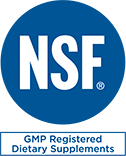Throughout history, silver has been used to improve human health.
Silver vessels were used by ancient Greeks, Romans, Egyptians and Phoenician to preserve drinking water.1 The father of medicine, Hippocrates, first described silver’s antimicrobial benefits, writing about its healing and anti-disease properties.2 In the Middle Ages, the wealthy benefited from silver eating utensils, giving rise to the phrase “born with a silver spoon in your mouth.”
Silver’s antimicrobial and wound healing properties were applied to battlefield medicine in the 1800s. Fine silver wires used for sutures contributed to faster healing, and silver nitrate was used to treat wound and skin ulcers. Silver was also used to treat syphilis during the Civil War, and in the 1880s, silver nitrate began to be used to prevent infections in the eyes of newborns.3
Current uses of silver coating include invasive medical devices such as catheters and endotracheal tubing, preventing bacterial colonization and biofilm formation.4-6 Silver-based water purification systems are installed and used on the international space station.7
Silver occurs naturally in many places, and it is found in many foods, such as wheat, fish,8 mushrooms9 and mammalian milk.10 A study in the United Kingdom concluded that the average adult’s daily diet includes 27 micrograms of silver.11 Silver is also naturally present in river waters in some areas.12
The health benefits of silver have been widely studied for thousands of years, and the effectiveness of its contemporary use for immune support and topical healing applications has been significantly substantiated. While the Ancients did not know the chemical and biological mechanisms of how silver metal preserved their drinking water, the modern peer-reviewed literature has elucidated them. We now know, it is the outermost silver atoms of the silver nanoparticle that undergo surface oxidation and, when mixed into a pure water medium, subsequently release bio-active silver ions into the water, which provides the health benefits.13-15
Previous: The Science of SilverTM
References
- Johns C, I. The roman silver cups from hockwold, norfolk. Archaeologia, 2011. 108: p. 1-13.
- Alexander JW, History of the medical use of silver. Surgical infections, 2009. 10(3): p. 289-292.
- Manring MM, Hawk A, et al., Treatment of war wounds: A historical review. Clinical Orthopaedics and Related Research®, 2009. 467(8): p. 2168-2191.
- Sim W, Barnard RT, et al., Antimicrobial Silver in Medicinal and Consumer Applications: A Patent Review of the Past Decade (2007-2017). Antibiotics, 2018, 7(93): p.1-15.
- Tokmaji G, Vermeulen H, et al., Silver-coated endotracheal tubes for prevention of ventilator-associated pneumonia in critically ill patients, Cochrane Database Syst Rev, 2015 Aug 12; (8):CD009201
- https://www.advancedsilver.com/FDA_silver_news_release.htm, accessed 5/24/19.
- Birmele, M.N., L.E. McCoy, and M.S. Roberts, Disinfection of spacecraft Potable Water Systems by Passivation with Ionic Silver. American Institute of Aeronautics and Astronautics, 2011.
- Millour S, Noël L, et al., Strontium, silver, tin, iron, tellurium, gallium, germanium, barium and vanadium levels in foodstuffs from the second french total diet study. Journal of Food Composition and Analysis, 2012. 25(2): p. 108-129.
- Feeney MJ, Miller AM, et al., Mushrooms—biologically distinct and nutritionally unique: Exploring a “third food kingdom”. Nutrition Today, 2014. 49(6): p. 301-307.
- Murthy G,Rhea U, Cadmium and silver content of market milk. Journal of Dairy Science 1968. 51(4): p. 610-613.
- Hamilton EI,Minski MJ, Abundance of the chemical elements in man’s diet and possible relations with environmental factors. Science of The Total Environment, 1973. 1(4): p. 375-394.
- Wen L-S, Santschi PH, et al., Colloidal and particulate silver in river and estuarine waters of texas. Environmental Science & Technology, 1997. 31(3): p. 723-731.
- Liu J, Pennell KG, et al., Kinetics and mechanisms of nanosilver oxysulfidation. Environmental Science & Technology, 2011. 45(17): p. 7345-7353.
- Liu J, Wang Z, et al., Chemical transformations of nanosilver in biological environments. ACS Nano, 2012. 6(11): p. 9887-9899.
- Gorham J, MacCuspie R, et al., Uv-induced photochemical transformations of citrate-capped silver nanoparticle suspensions. Journal of Nanoparticle Research, 2012. 14(10): p. 1-16.

